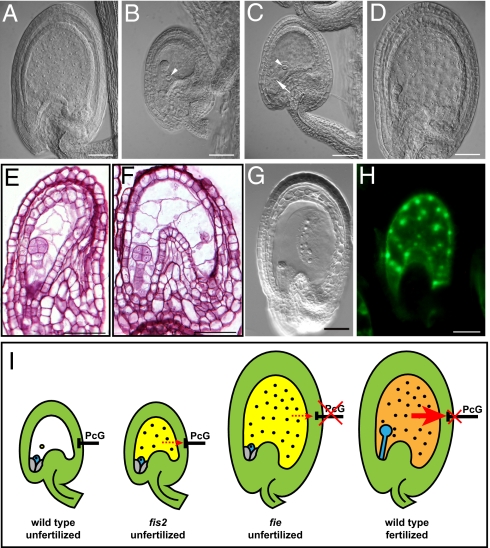Fig. 4.
The sexual endosperm generates a signal for seed coat development dependent on AGL62. (A) Seed developing after fertilization with kpl pollen at 2 DAP. Seed contains only endosperm and no embryo. (B) Seed developing after fertilization with kpl pollen at 2 DAP. Seed contains only an embryo and no endosperm. (C) Unfertilized ovule shortly before degeneration. (D) Seed developing after fertilization with wild-type pollen at 2 DAP. (E and F) Sections of agl62-2/− seeds at 3 DAP. (G) Cleared ttn2 seed at 3 DAP. (H) AGL62:AGL62-GFP expression in autonomous fie-12 seeds. (Scale bars, 50 μm in A–H.) Arrow and arrowheads mark egg cell and central cell, respectively. (I) Model depicting events in autonomous and sexual seed development. In wild-type ovules, sporophytically active PcG proteins repress seed coat development. In fis2 mutants, this repression remains active and autonomous endosperm division is not accompanied by seed coat development. In fie mutants, this repressive block is released and autonomous endosperm formation is associated with seed coat development. In wild type, a signal formed by the sexual endosperm (red arrow) relieves PcG repression in the seed coat, causing the initiation of seed coat development. In fis2 and fie mutants, no signal or only a weak signal is formed by the autonomous endosperm.

